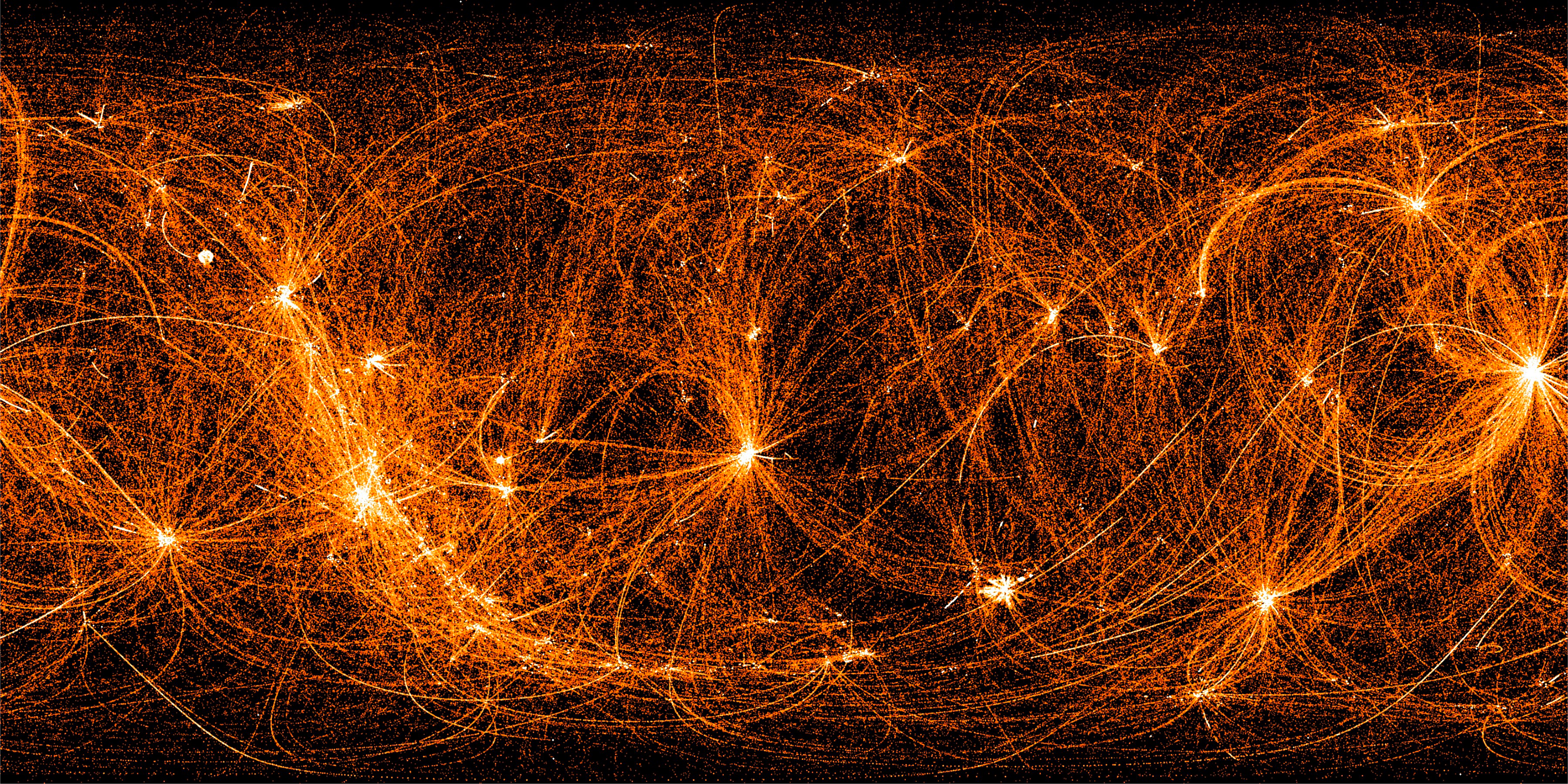NASA'S NICER Does the Space Station Twist
This time-lapse video, obtained June 8, 2018, shows the precise choreography of NASA’s Neutron star Interior Composition Explorer (NICER) as it studies pulsars and other X-ray sources from its perch aboard the International Space Station. NICER observes and tracks numerous sources each day, ranging from the star closest to the Sun, Proxima Centauri, to X-ray sources in other galaxies. Movement in the movie, which represents a little more than one 90-minute orbit, is sped up by 100 times.
One factor in NICER’s gyrations is the motion of the space station’s solar arrays, each of which extends 112 feet (34 meters). Long before the panels can encroach on NICER’s field of view, the instrument pirouettes to aim its 56 X-ray telescopes at a new celestial target.
As the movie opens, the station’s solar arrays are parked to prepare for the arrival and docking of the Soyuz MS-09 flight, which launched on June 6 carrying three members of the Expedition 56 crew. Then the panels reorient themselves and begin their normal tracking of the Sun.
Neutron stars, also called pulsars, are the crushed cores left behind when massive stars explode. They hold more mass than the Sun in a ball no bigger than a city. NICER aims to discover more about pulsars by obtaining precise measures of their size, which will determine their internal make-up. An embedded technology demonstration, called Station Explorer for X-ray Timing and Navigation Technology (SEXTANT), is paving the way for using pulsars as beacons for a future GPS-like system to aid spacecraft navigation in the solar system — and beyond.
This time-lapse video, obtained June 8, 2018, shows the precise choreography of NASA’s Neutron star Interior Composition Explorer (NICER) as it studies pulsars and other X-ray sources from its perch aboard the International Space Station. NICER observes and tracks numerous sources each day, ranging from the star closest to the Sun, Proxima Centauri, to X-ray sources in other galaxies. Movement in the movie, which represents a little more than one 90-minute orbit, is sped up by 100 times.
Music: "Frames of Motion" from Killer Tracks
Credit: NASA
Watch this video on the NASA Goddard YouTube channel.
Complete transcript available.

This time-lapse loop shows NASA’s Neutron star Interior Composition Explorer (NICER) slewing to track pulsars and other X-ray sources from atop the International Space Station. Behind it, the station’s giant solar arrays track the Sun. The motion is sped up 100 times. Animated gif.
Credit: NASA
This time-lapse of NASA’s Neutron star Interior Composition Explorer (NICER) shows it slewing to track pulsars and other X-ray sources from its perch aboard the International Space Station. Behind it, the station’s giant solar arrays track the Sun. The motion is sped up 100 times.
Credit: NASA
Music: "Frames of Motion" from Killer Tracks
Complete transcript available.
This time-lapse video, obtained June 8, 2018, shows the precise choreography of NASA’s Neutron star Interior Composition Explorer (NICER) as it studies pulsars and other X-ray sources from its perch aboard the International Space Station. NICER observes and tracks numerous sources each day, ranging from the star closest to the Sun, Proxima Centauri, to X-ray sources in other galaxies. Movement in the movie, which represents a little more than one 90-minute orbit, is sped up by 100 times. Original copy with no sound or editing.
Credit: NASA
For More Information
Credits
Please give credit for this item to:
NASA's Goddard Space Flight Center. However, individual items should be credited as indicated above.
-
Producer
- Scott Wiessinger (USRA)
-
Science writer
- Francis Reddy (University of Maryland College Park)
Release date
This page was originally published on Tuesday, August 14, 2018.
This page was last updated on Wednesday, May 3, 2023 at 1:46 PM EDT.
